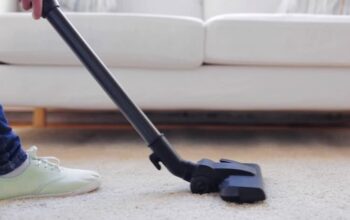How to Identify and Mitigate Risks Through Proper Safety Audit
The landscape of occupational safety has undergone a remarkable change. With the shift in the workforce and the changing attitude of employers, there is an emphasis on creating a good Health and Safety Culture at work. One of the many reasons for this shift resulting in the increased importance of a health and safety culture is awareness.
As employees become more informed about the potential dangers in their workplace, they bring it to the notice, pushing their employers to adopt the right measures to avoid them. So, does occupational health and safety end with applying appropriate measures?
A health and safety culture goes beyond the measures and practices, extending to methods that help you check if the practices are effective. What we mean to hint at here are Safety Audits. h
Safety Audits are routine checks to evaluate the effectiveness of safety measures in your offices, factories, manufacturing units, or any other place your employees operate. It is to see if your workplace meets the necessary safety standards. They should be done regularly to keep an eye on any potential threats.
However, the question is: What is the right way to go about a safety audit? Let’s find out…
How do you identify risks through safety audits?
Table of Contents
- Employ a third party: first and foremost, start by employing a third party to conduct your safety audit. In-house auditors may bring in bias, thereby affecting the results. A third-party auditor, in contrast, will be objective with the process. However, your in-house auditor can always assist this third-party auditor in interpreting the results.
- Focus on the frequency: Holding a safety audit once a year may not be as effective as holding it once every 6 months. Furthermore, these audits should be unannounced to avoid the risks of last-minute coverups by managers or others in the leadership position.
- Consider previous audit reports: Studying the emerging patterns in the previous reports can help make the necessary tweaks in the upcoming audit. It will also give the auditor important insight into the progress and shortcoming of your practices. Knowing this, they will be better equipped to carry out the upcoming audit and interpret the outcome.
Ways to Mitigate Risks After Safety Audits
After carrying out a safety audit, you must also interpret it and introduce the necessary changes in your practices to overcome the shortcomings. Let’s look at some ways to mitigate risks after an audit.
- Discuss with your employees: Once you find out the possible threats and areas of danger, call for a group meeting with your employees. You can call them as per department or all at once. Next, present the findings to them and ask them to suggest ways to avoid the problems. You may wonder why is it important to involve your employees? It’s because they can make an accurate judgment of how the problem can be solved since they are the ones who work in that particular condition.
- Introduce occupational health and safety courses: Let’s say, in your safety audits, you discover a particular danger for the first time. It can be a result of the changes you have made in the workplace, the introduction of new machinery, or a simple change in practice. How do you overcome it in the best way possible? Perhaps, a good solution is to introduce a course that concentrates on that particular issue. It must be comprehensive, explaining why is it a threat in the first place, followed by solutions.
- Upskilling and training: One of the reasons why your workplace isn’t safe is because your workforce does not have the necessary training or they are not adept at the latest technology and practices. Arranging for training sessions and motivating your workforce to learn new, advanced skills can enhance the health and safety culture of your company.
There are plenty of organisations promising to conduct the best safety audit. As a result, finding the best one can be hard. But fret not! The British Safety Council is the best safety partner you can have. Their five-star occupational health and safety audit is a comprehensive practice, measuring your safety practices against international standards. They practice what they preach: No one should be injured or made ill through their work, making unrestrained efforts at keeping your workspace as safe as possible.
Read More: Healthy Eating Habits for Men




